The Other Night Heron
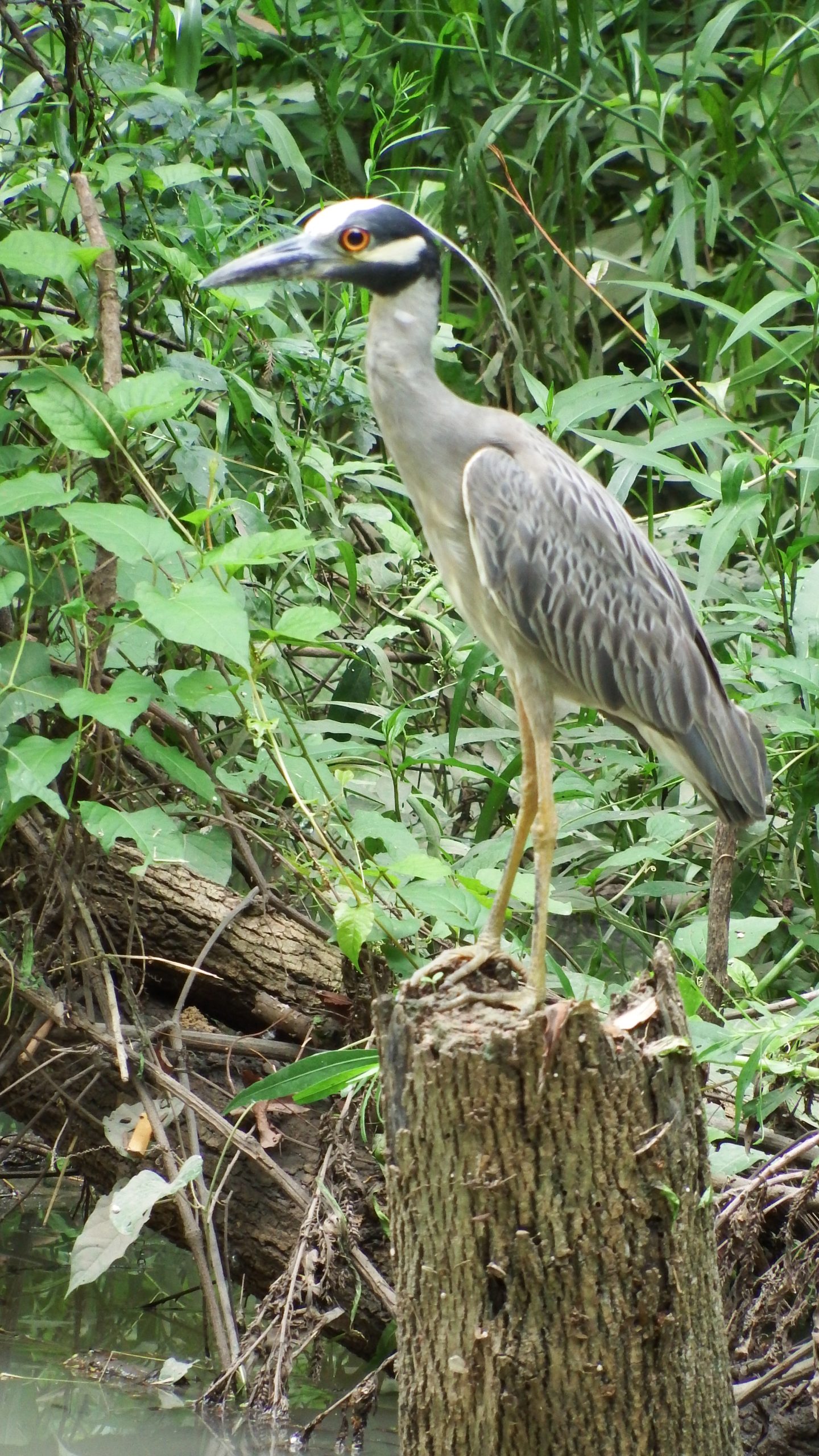 I had never seen a night heron until I moved to Houston. I first noticed them when I played softball. They were the large birds wading around in the puddles beyond center field. You might imagine my proficiency at softball from the fact that I spent my time facing the wrong way.
I had never seen a night heron until I moved to Houston. I first noticed them when I played softball. They were the large birds wading around in the puddles beyond center field. You might imagine my proficiency at softball from the fact that I spent my time facing the wrong way.
We also had night herons in my neighborhood 20 years ago. They amused the heck out of me; I would see them balanced on phone wires and running across rooftops. Night Herons seem very much too large for each of these activities. Both my softball herons and my neighborhood herons were Yellow-Crowned Night Herons.
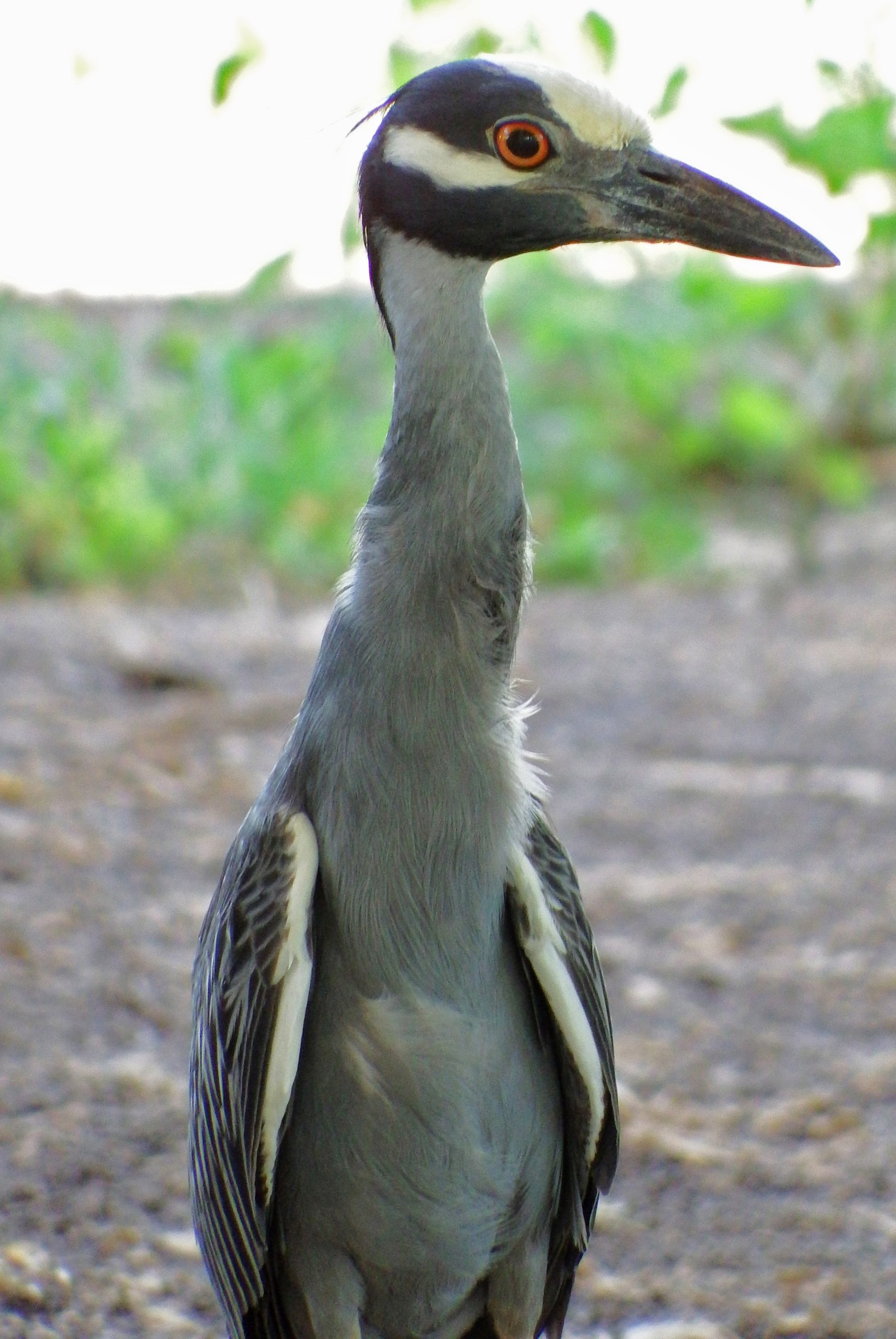
Yellow Crowned Night Heron under the bat bridge. His upright posture should have tipped me off, but I was so accustomed to seeing only black crowns, I decided this guy was just an oddly shaped black crown until I looked at my photos when I got home.
Over time, I became aware that there were two kinds of night herons, the ones I saw all the time, the Yellow-Crowned Night Herons, and the “other ones,” which were Black-Crowned Night Herons. I tried to commit the differences to memory so I wouldn’t confuse them. As their names imply, what these birds share in common (in addition to looking rather more alike than these photos might suggest), is that they both feed in the evening and at night, unusual for a waterbird.
I mercifully stopped playing softball and sadly the night herons disappeared from my neighborhood as it gentrified.
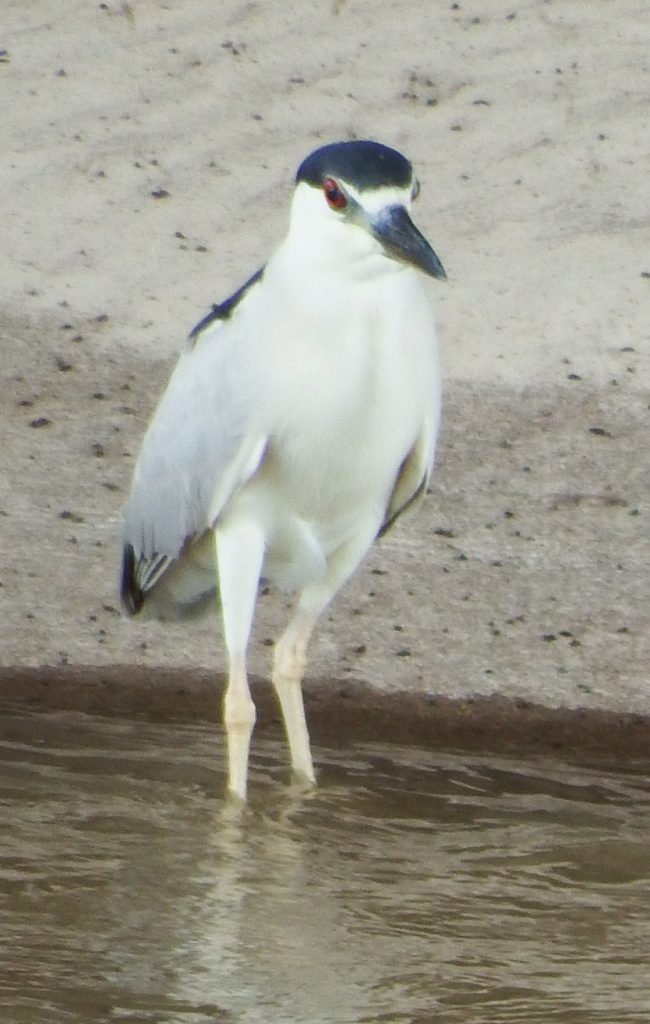
Black-Crowned Night Heron
When I started running, in a futile effort to stop the aging process, I spent a lot more time in the Park. Every time I passed under the bat bridge, I would see a night heron. And I frequently saw one near the outflow from the dog park. I would see them so often, I came to expect them. They were all Black-Crowned Night Herons. Over time, I became so adapted to only seeing the black crowns, that when I saw a yellow crown under the bat bridge, I dismissed it as an oddly shaped black crown until I realized that it was one of the “other” night herons, and again, I committed the differences to memory so I wouldn’t confuse them.
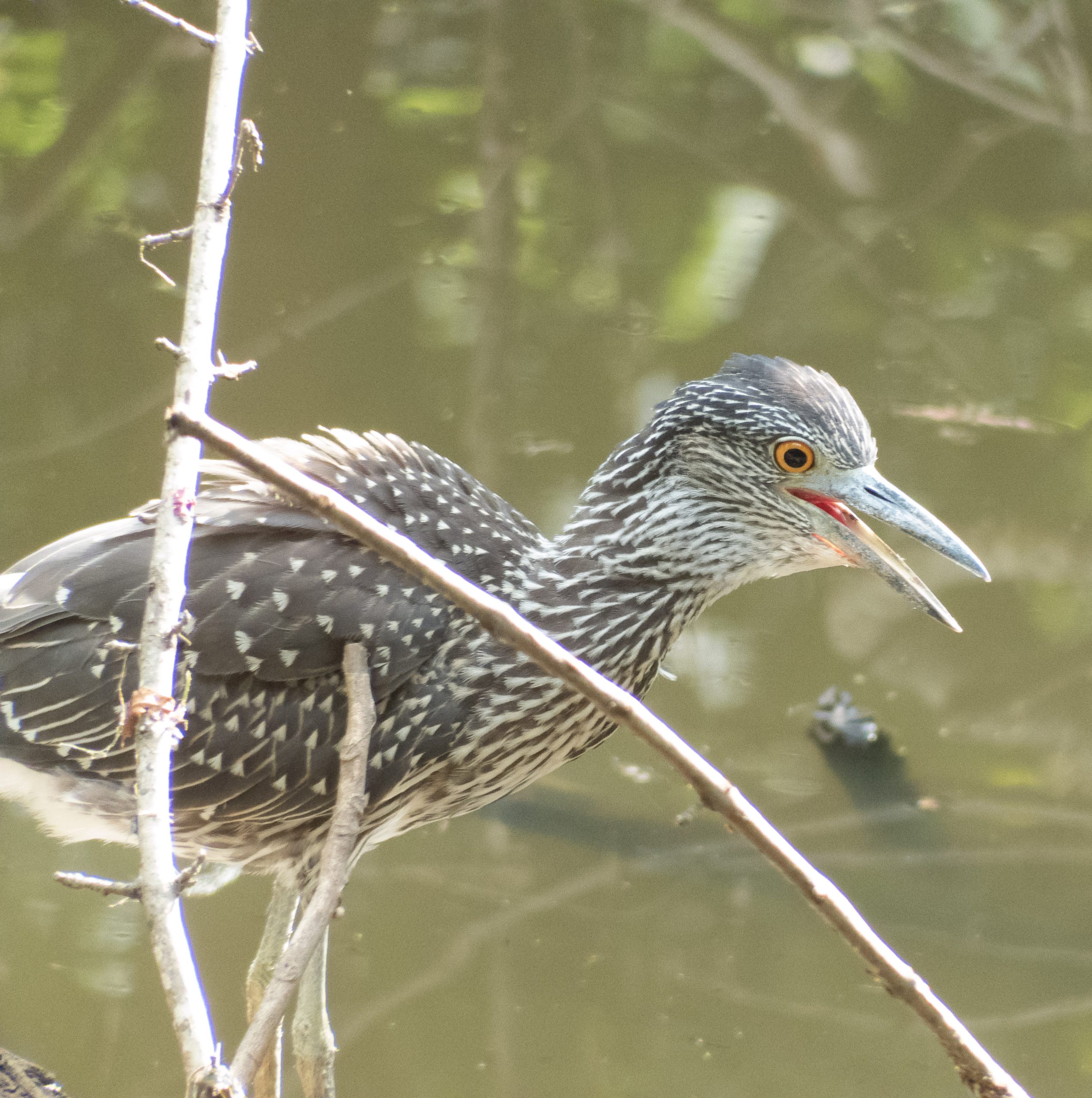
Juvenile Yellow-Crowned Night Heron. Just to add to the confusion, in neither species do the juveniles look anything like their parents for about the first year.
As followers of the blog probably know, have been spending a good bit of time in the Greentree area. There, I kept running into Yellow-Crowned Night Herons. Never a black crown.
I realized that I almost never saw these birds together. They look remarkably similar. They seem to occupy almost the same ecological niche (night-feeding heron), yet I always see them in different places. Neighborhood, softball field and Greentree area, just yellow crowns. Bat bridge, alongside the bayou, in all the outflows and inflows, just black crowns.
If we were on a walking tour and I were talking about this topic, I would now be asking you, why do you think it is that these birds live so near one another, but their paths rarely cross?
If your answer was “because they eat different things,” toss yourself a piece of candy (if you have joined me on a tour that will make more sense); you are correct.
According to Cornell Lab, Black-Crowned Night Herons will eat almost anything. Their diet includes leeches, earthworms, insects, crayfish, clams, mussels, fish, amphibians, lizards, snakes, turtles, rodents, birds, eggs, carrion, plant materials, and garbage from landfills.
Yellow-Crowned Night Herons are much more discriminating. When at the coast, they eat crabs. Inland, they eat crayfish.
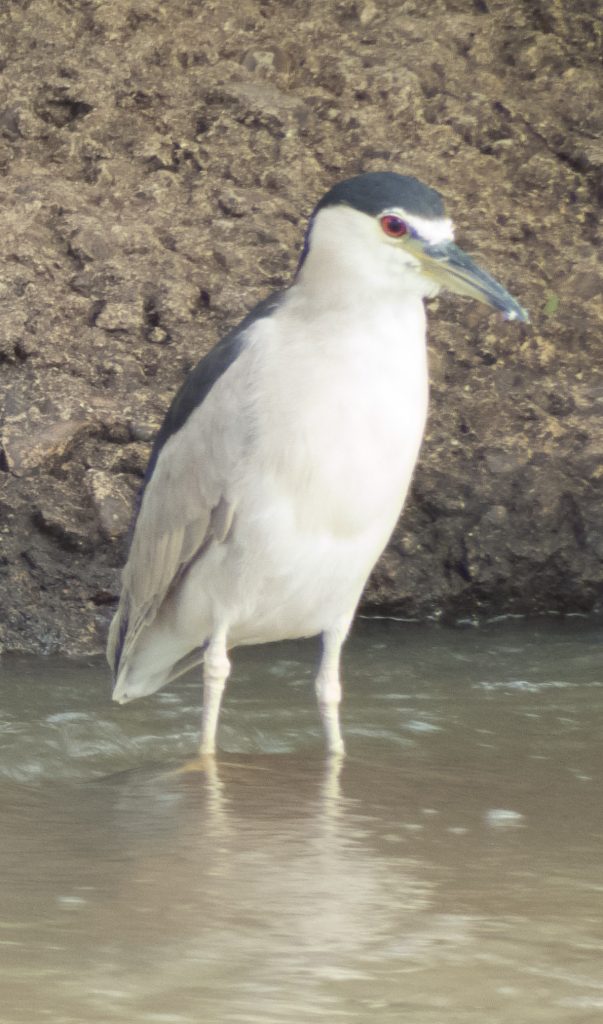
Black-Crowned Night Heron with something (and apparently it could be almost anything) in its mouth
So what do wet softball fields, the ditches in my neighborhood and the Greentree area have in common? Yeah. They are full of crayfish. What does under the bat bridge, alongside the bayou, inflows, and outflows have in common? Apparently enough to keep a Black-Crowned Night Heron well fed and happy.
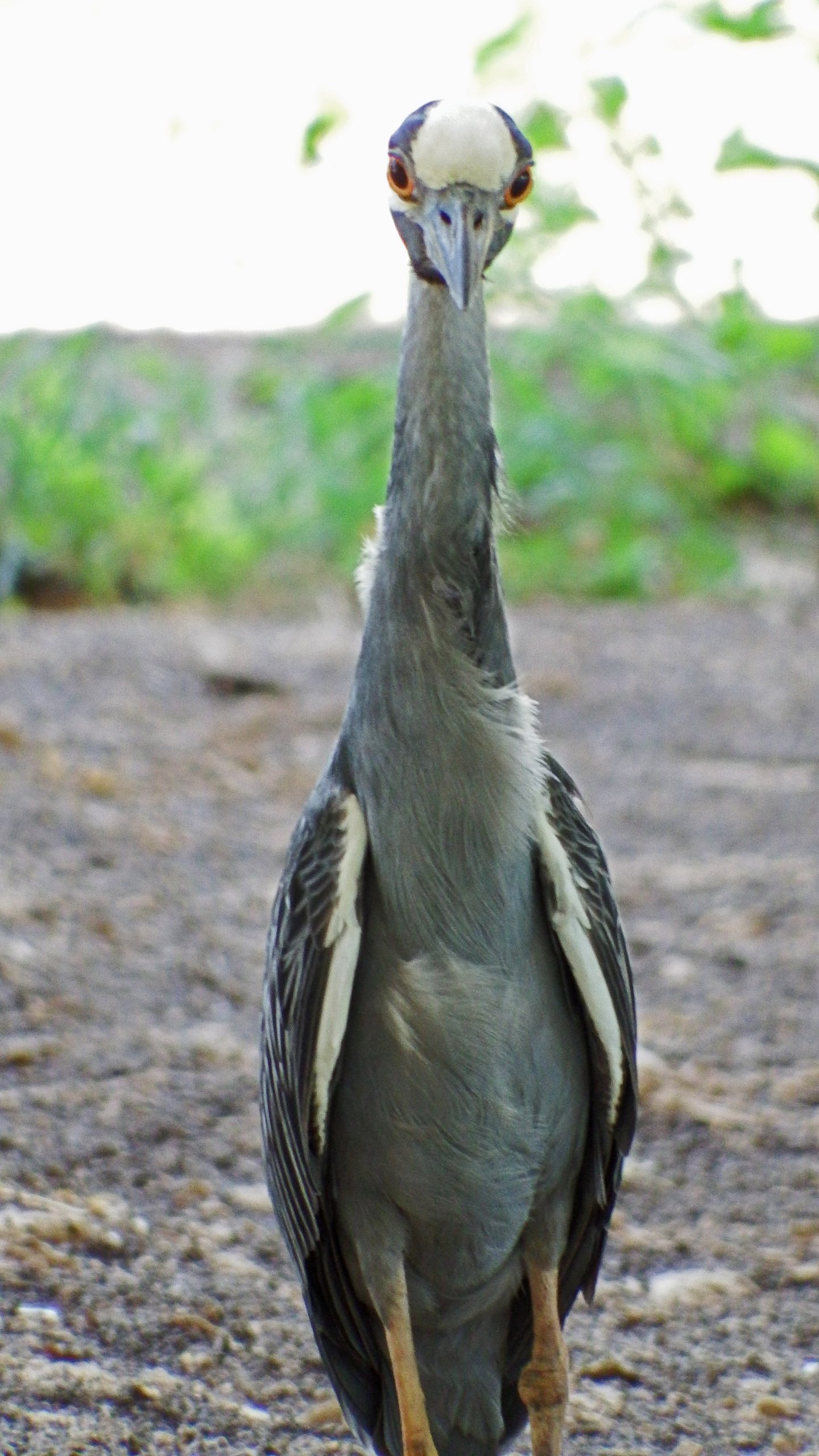
Yellow-Crowned Night Heron demonstrating how really narrow she is.

